News
Deptherapy’s Red Sea Wrecks – Part 5
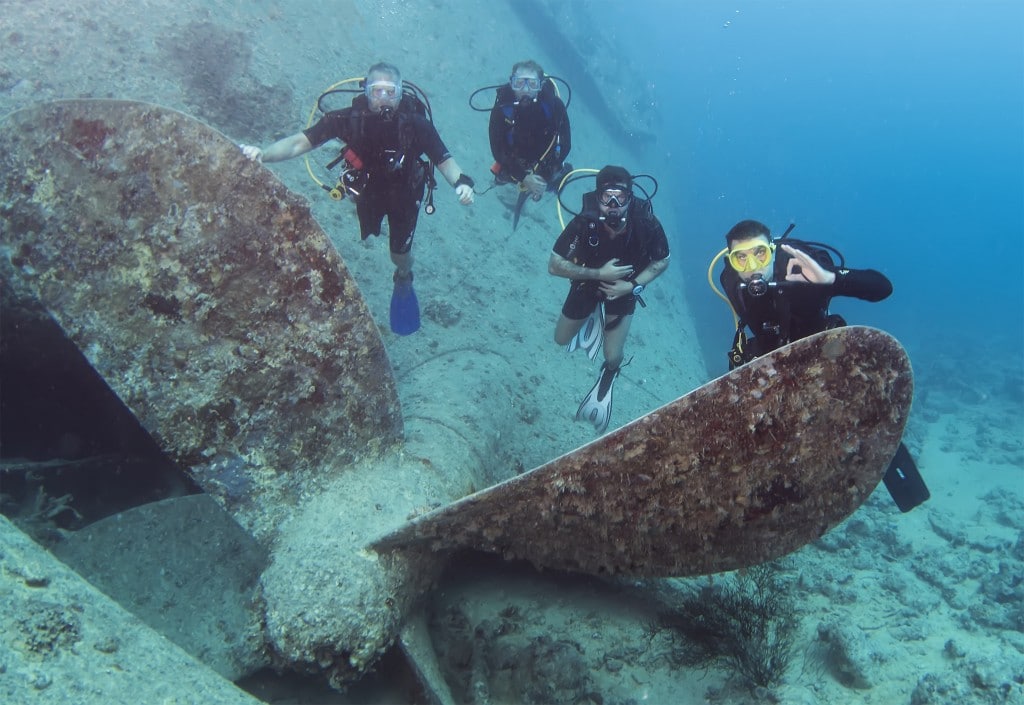
Part five of Gary Green’s account of the Deptherapy Red Sea Military and Forgotten Wrecks liveaboard expedition.
Days 7 & 8: SS Thistlegorm (Four Dives)
And so it was on to the Thistlegorm, a shipwreck that had been built up so skilfully in the medium of presentation by Dan Phillips, another of the programme members who suffers with PTSD. Regarding his injuries though, he refuses to be defined by them. He does, however, not mind being defined as a self-proclaimed geek. I am not but I did have a sense of real enthusiasm injected into me by his presentation; I think we all did as he amazingly built this picture up in our minds. He produced videos of the original launch, from the early forties, showing the ship being pulled from harbour; it was fascinating that this original footage was available, especially as the ship in front of our eyes was now beneath us.
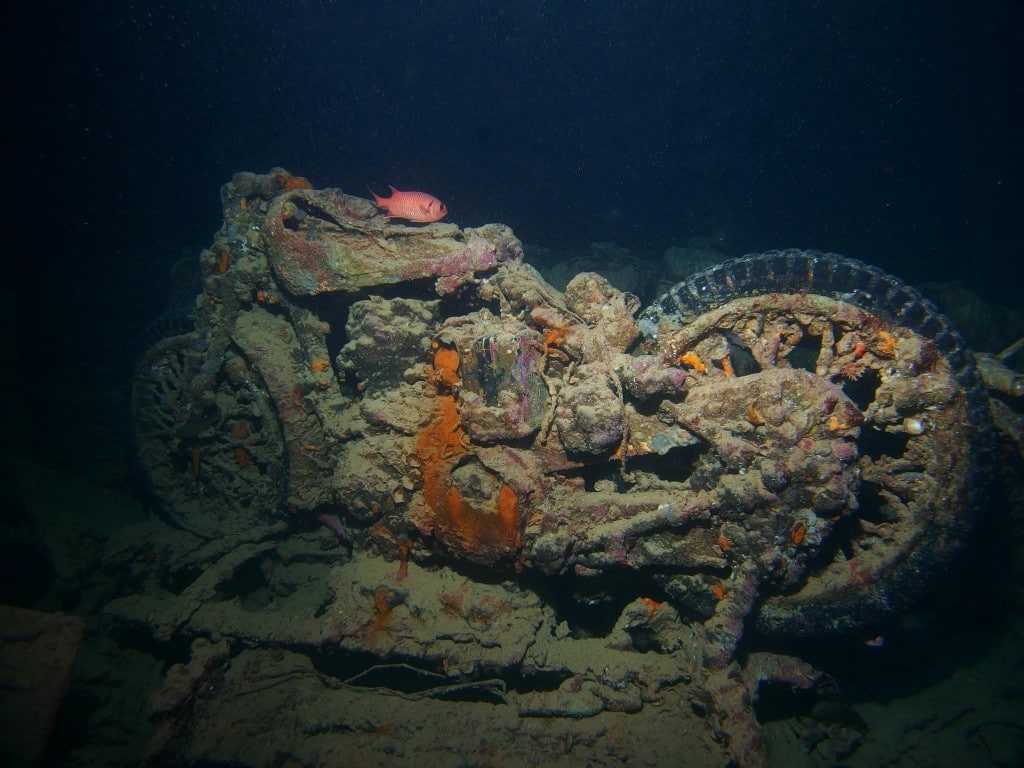
The Thistlegorm is a war grave and to us veterans it hit a nerve. We all share that bond of war that stretches back to the first soldiers that fought for freedom. It would be the same as someone in fifty years returning to Afghanistan to places where I had lost friends in war; it puts a lump in my throat. The story was told of the sinking and I could see it in my head. I took a step outside and could picture myself standing on board as the bombers flew over, the chaos, death and fear that then ensued.
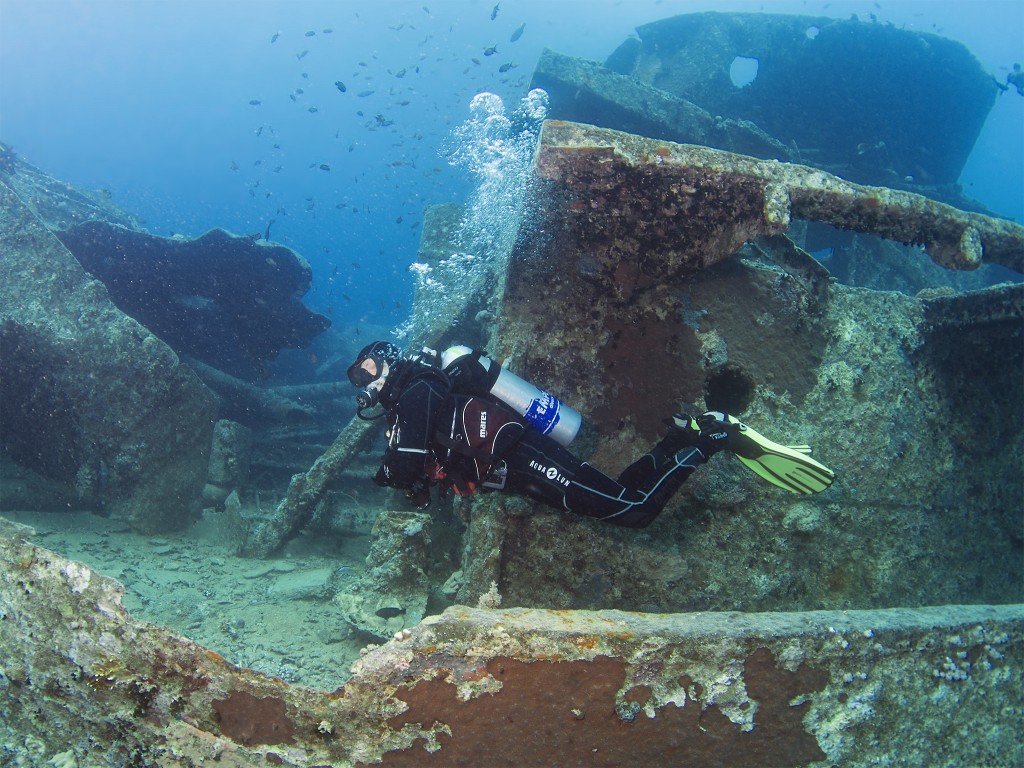
The wreck did not disappoint. The current was strong and we held tight to the shot line to avoid being lost in the water. The dive was incredible; the wreck itself had so many mysteries. The guns were still intact on the ship and it was incredible to think that at some point in time these would have had to be used to defend themselves. How unfortunate that they were not used when they were needed most; now they lay inert, a living submerged museum piece.
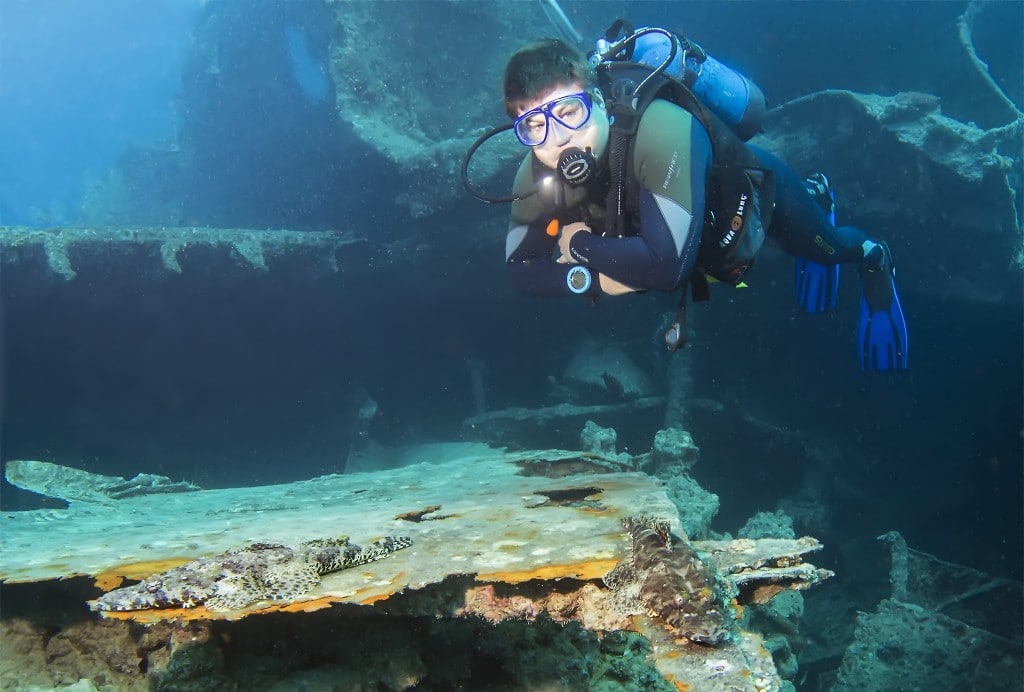
There were parts of the wreck we could penetrate. The WWII cargo still on board – motorcycles, trucks etc. – all still in the same place as when the ship sank. At the bottom of the shot line stood a big shell of ammunition, which I would guess was for the anti-aircraft weapons on board. However inert it may be, wet or damaged, it’s still not something you would want to be tampering with. The lads obviously made jokes about striking the percussion cap underwater, which certainly was a no-no. In total we completed four dives on the Thistlegorm, which you could say was still not enough to uncover all of its mysteries. We carried out two on day seven and another two on day eight before moving on to Abu Nuhas. To finish off the Thistlegorm, the most apt way to sum it up would not be my words, but the words of the newfound historian and enthusiast, Dan Philips, who says…
“The S.S. Thistlegorm is almost as it was before it was sunk (apart from the blast damage) which makes it easy to put yourself in the shoes of the men that were aboard. No museum or battlefield tour on land could bring you closer to the history of the era.”
A note from Richard Cullen, Founder & Chairman Deptherapy & Deptherapy Education:
ACT OF REMEMBRANCE
So two days on the famous SS Thistlegorm wreck. This amazing wreck never fails to impress. All those who had never dived it before were moved by the BSA motorbikes, the trucks, rifles, engines, munitions etc in lines as they were when the ship was sunk whilst at anchor by a German bomber in World War II. For most of the time we have been the only boat moored on the site and those that wanted were able to penetrate the decks of the ship.
Before we departed SS Thistlegorm we held a very poignant and emotional Service of Remembrance on the top deck of the Princess Diana. The programme members and the dive team formed a hollow square. The hollow square was lined by the ‘troops’ on three sides with the fourth side empty to represent those departed brothers in arms. Dickie Henderson called the square to attention.
We named and remembered the four crew members who died that night: Alfred Keen, aged 68, Joseph Munro Rolfe aged 17, Karl Sankando aged 49, Alexander Watt aged 21 and the five members of the Royal Navy gun crew, Arthur Cain aged 26, Archibald Gethin 19, Donald Masterson aged 32, Christopher Todds aged 25 and Thomas Woolaghan aged 24. We also remembered the friends and brothers in arms of our programme members who did not return home from recent conflicts. The majority of our programme members had lost friends and comrades in Iraq, Afghanistan, Northern Ireland and other conflicts.
Gary Green delivered Binyon’s Poem for the Fallen:
“They shall grow not old as we that are left grow old, age shall not weary them nor the years condemn. At the going down of the sun and in the morning we will remember them.”
The Last Post echoed eerily across the empty Red Sea. As the notes faded away on the wind, Chris Middleton repeated those famous lines inscribed at Kohemi:
“When you go home tell them of us and say for your tomorrow we gave our today.”
The ceremony ended with the Gaelic Blessing:
“May the road rise to meet you.
May the wind always be at your back
May the sun shine on your face and the
Rains fall soft upon your fields and until
We meet again may your God hold you safe in the palm of his hand.”
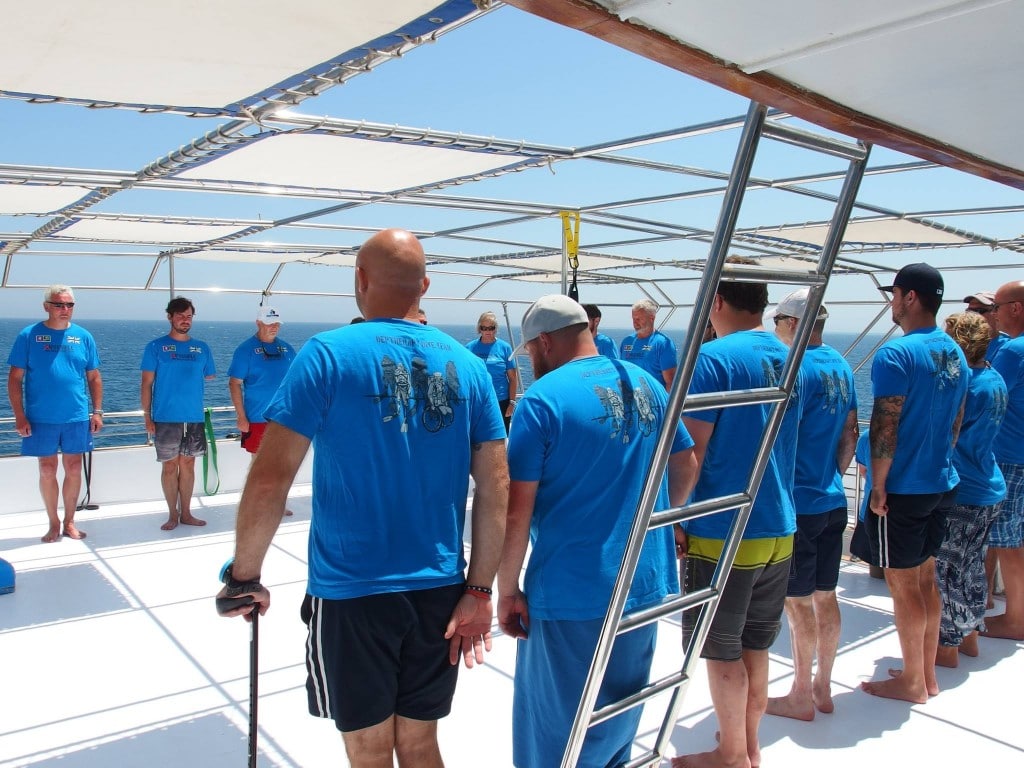
Day 8: Abu Nuhas – SS Markus
After five dives on the Thistlegorm, we headed to the reef of Abu Nuhas. There are quite a few wrecks on this reef and many different stories. Some say that the reef had taken ships over the years, that the reef was notorious for sinking boats when the captain was caught off guard. The story that we were told was slightly different, in fact three of the wrecks had belonged to one man who had sunk them to claim back money from his insurance. I certainly am not informed enough to make a judgement either way but it was pointed out that we were out of the way of any commercial shipping lanes, which does induce some doubt into the nature of the ships sinking from any natural disaster.
Another story about this wreck that was strange was that one wreck was actually on top of another. The Markus has over the years been mixed up with the Chrisoula K. The maps that you pull for the Chrisoula K are in actual fact the Markus, which is also known as the tile wreck, named this because the cargo was tiles, which can still be seen on the wreck itself. The Chrisoula K was actually 55m below the Markus, so we were not actually diving it at all. Available information on both of these wrecks is misleading.
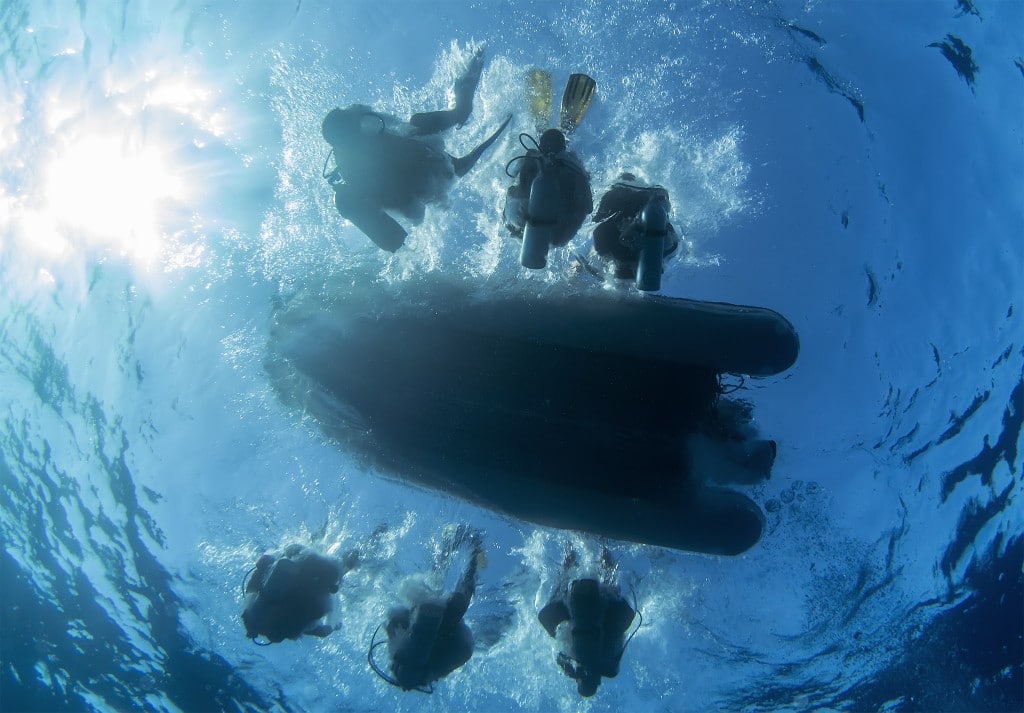
Inside the wreck of the SS Markus there is a tool room where the working areas are still visible. A pillar drill can still be seen, the drill itself still intact but the framework deteriorated over time by the salty seawater. The wreck, like all the wrecks, had been eaten away over time, the water eroding away the history, giving way to the marine life that has spawned an underwater circle of life; as the wreck dies, the sea life emerges. The wreck itself was easy to navigate. Holes in the wreck structure gave way to light which illuminated the passageways. A tool box still has tools in the open drawers; a reminder of the work – and life – that once used to take place on the ship.
Day 8: Abu Nuhas Reef (Night Dive)
The second dive at Abu Nuhas was a reef dive conducted as a night dive. The reef itself was actually in quite poor condition, which was a shame, although at night some of the colour seems to fade away until your torch beam lights up the way. The life on the reef given its condition was impressive. One of the Red Sea’s convicts gave me a fright; as I hovered a few inches off the sea floor I narrowly missed a scorpion fish. It could have left me with a nasty reminder of an absolutely once in a lifetime trip. Amongst the life that we saw was an absolutely stunning emperor angel fish My favourite fish has to be the clown fish (sorry, Red Sea anemone fish) but the sight of this emperor fish was close to taking the podium. We won’t include sharks in this as the competition becomes slightly one sided…
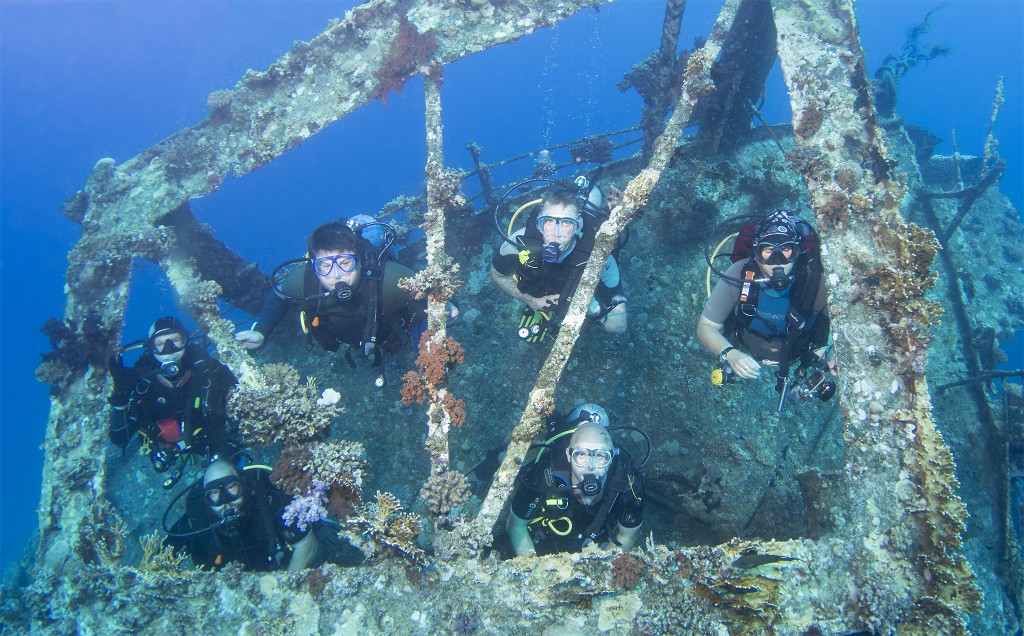
Read more next week: Gary’s blog concludes on Monday / Tuesday with Parts Six & Seven.
Donate to Deptherapy or find out more about their work at www.deptherapy.co.uk
Thanks to Dmitry Knyazev and Steve Rattle for the incredible photographs.
Gear News
Go anywhere with Stahlsac
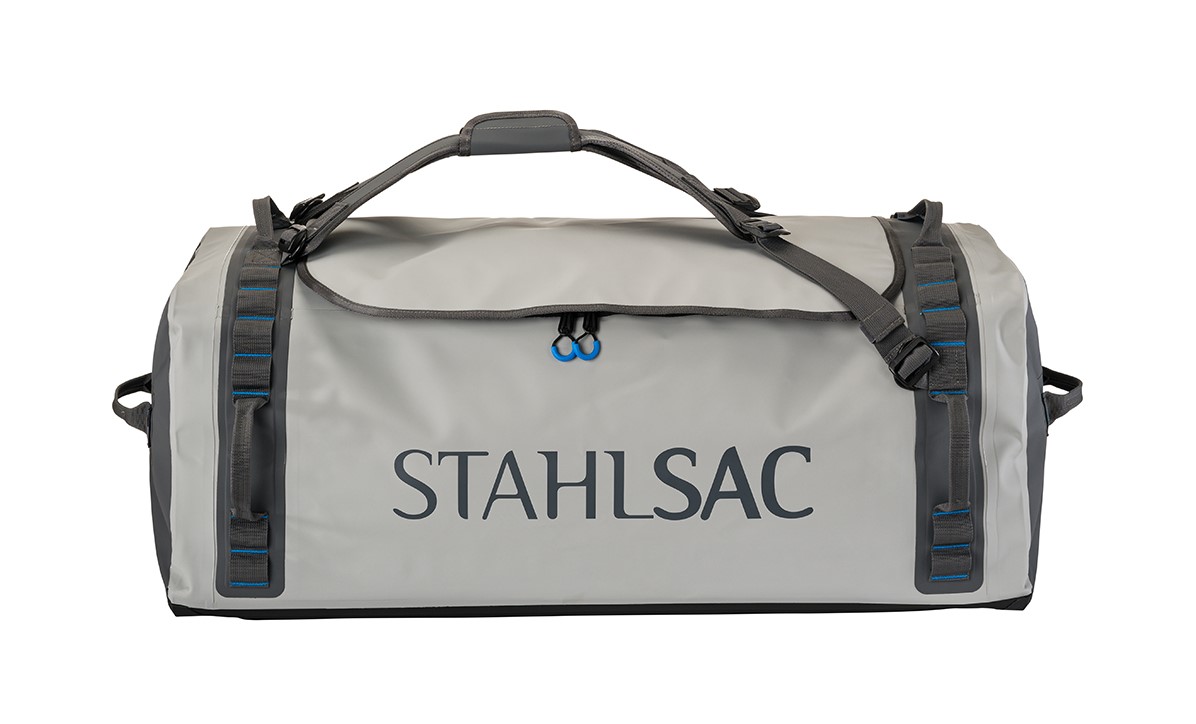
Stahlsac dive bags and travel luggage are built for our community of divers, surfers, kayakers and outdoor explorers who need bags that are constructed with durability, toughness, and 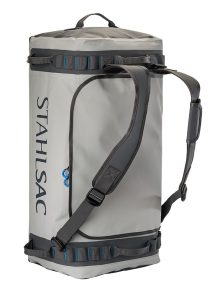 the highest quality the industry has ever seen. We were founded by one man determined to build better watersports and dive bags, and today, that mission is carried on by many. Adventure doesn’t just present itself; it requires discovery. When we design dive bags, we make sure they are tough enough for you to explore in all conditions—warm and cold, wet and dry—to the nearest and farthest reaches of the earth. And for those times you want to push the boundaries of adventure, Stahlsac dive bags make sure you can truly GO ANYWHERE.
the highest quality the industry has ever seen. We were founded by one man determined to build better watersports and dive bags, and today, that mission is carried on by many. Adventure doesn’t just present itself; it requires discovery. When we design dive bags, we make sure they are tough enough for you to explore in all conditions—warm and cold, wet and dry—to the nearest and farthest reaches of the earth. And for those times you want to push the boundaries of adventure, Stahlsac dive bags make sure you can truly GO ANYWHERE.
Abyss Duffels
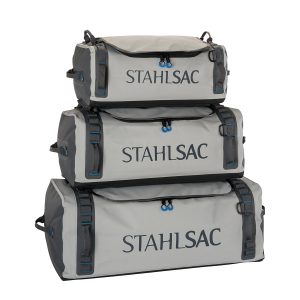 Made to be your partner-in-crime on every adventure, Stahlsac’s Abyss Duffels protects your gear from Mother Nature’s worst. Tough and 100% waterproof with double-TPU nylon material that shrugs off daily wear-and-tear, and RF-welded seams further boost the bag’s potential for lifelong exploring. Get Wet. Get Lost. Go Anywhere with Abyss.
Made to be your partner-in-crime on every adventure, Stahlsac’s Abyss Duffels protects your gear from Mother Nature’s worst. Tough and 100% waterproof with double-TPU nylon material that shrugs off daily wear-and-tear, and RF-welded seams further boost the bag’s potential for lifelong exploring. Get Wet. Get Lost. Go Anywhere with Abyss.
- A weatherproof duffel for trips, travel, and adventure
- Ultra-durable double-TPU nylon protects your gear
- Material repels water and keeps your equipment dry
- RF-welded seams are flush, tough, and waterproof
- Removable straps transform duffel into backpack
- Zippered internal stow compartments carry essentials
- External zippered flap is easy to open and close
- Welded external handles make transporting a breeze
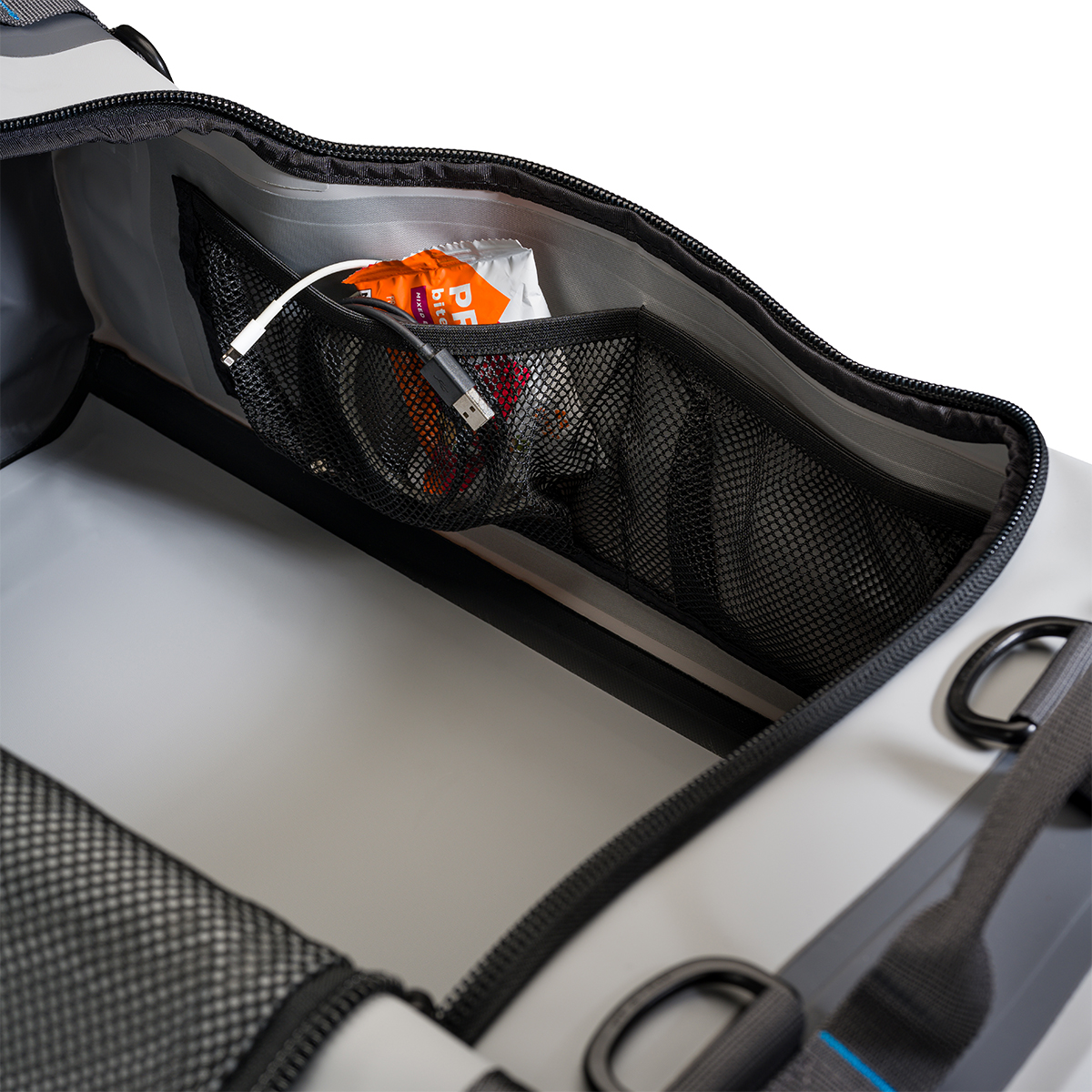
Panama Mesh Backpack
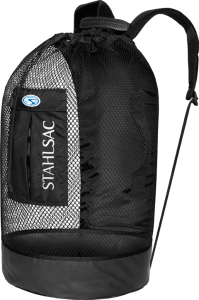 The most copied design in scuba diving, the Stahlsac Panama Mesh Backpack is the “original” design and features two high-density foam padded shoulder straps, extra durable polyester mesh, duffel bag handles and our unique zippered dry pocket inside that combines with a wet pocket outside. The bottom’s built from reinforced 18-gauge PVC nylon to combat the wear and tear of your active coastal lifestyle, and, as a bonus in every bag, we supply a 12″ x 12″ mesh drawstring satchel for extra stowing utility. Pack up your beach kit and go.
The most copied design in scuba diving, the Stahlsac Panama Mesh Backpack is the “original” design and features two high-density foam padded shoulder straps, extra durable polyester mesh, duffel bag handles and our unique zippered dry pocket inside that combines with a wet pocket outside. The bottom’s built from reinforced 18-gauge PVC nylon to combat the wear and tear of your active coastal lifestyle, and, as a bonus in every bag, we supply a 12″ x 12″ mesh drawstring satchel for extra stowing utility. Pack up your beach kit and go.
- Density foam padded shoulder straps
- Outside wet/dry pockets
- 2 Carry handles
- Tough, snag-resistant polyester mesh
- Reinforced PVC bottom
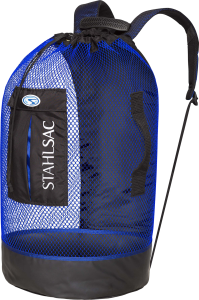
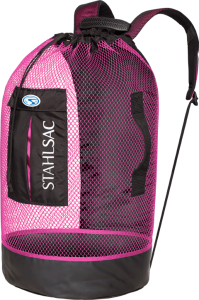
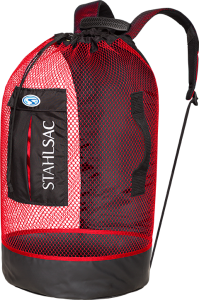
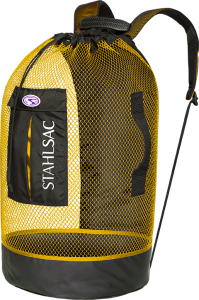
For more information about Stahlsac bags, visit www.stahlsac.com/dive-bags.
Sea & Sea is the home of Stahlsac and other leading diving brands in the UK.
Blogs
EXCLUSIVE: Jeff Goodman interviews Mark Spiers, CEO of New Scuba Diving Training Agency NovoScuba

In a video recorded exclusively for Scubaverse.com, Jeff Goodman interviews Mark Spiers, CEO of new scuba diving training agency NovoScuba.
Find out more about NovoScuba at www.novoscuba.com.
-

 News3 months ago
News3 months agoCapturing Critters in Lembeh Underwater Photography Workshop 2024: Event Roundup
-

 Marine Life & Conservation Blogs3 months ago
Marine Life & Conservation Blogs3 months agoCreature Feature: Swell Sharks
-

 Blogs2 months ago
Blogs2 months agoMurex Resorts: Passport to Paradise!
-

 Blogs2 months ago
Blogs2 months agoDiver Discovering Whale Skeletons Beneath Ice Judged World’s Best Underwater Photograph
-

 Gear Reviews3 weeks ago
Gear Reviews3 weeks agoGEAR REVIEW – Revolutionising Diving Comfort: The Sharkskin T2 Chillproof Suit
-

 Gear Reviews3 months ago
Gear Reviews3 months agoGear Review: Oceanic+ Dive Housing for iPhone
-

 News2 months ago
News2 months agoPADI Teams Up with Wellness Brand Neuro to Drive Ocean Change and Create a Blue State of Mind
-

 Marine Life & Conservation2 months ago
Marine Life & Conservation2 months agoSave the Manatee Club launches brand new webcams at Silver Springs State Park, Florida

















